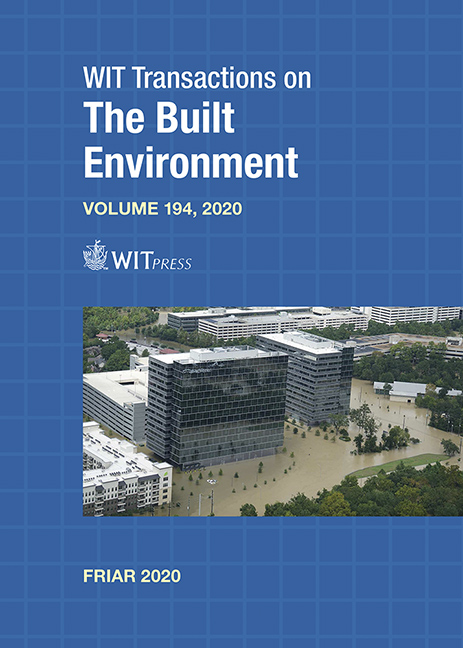HYDROLOGY, ECOLOGY AND WATER CHEMISTRY OF TWO SUDS PONDS: DETAILED ANALYSIS OF ECOSYSTEM SERVICES PROVIDED BY BLUE-GREEN INFRASTRUCTURE
Price
Free (open access)
Transaction
Volume
194
Pages
12
Page Range
167 - 178
Published
2020
Paper DOI
10.2495/FRIAR200151
Copyright
WIT Press
Author(s)
VLADIMIR KRIVTSOV, STEVE BIRKINSHAW, HEATHER FORBES, VALERIE OLIVE, DAVID CHAMBERLAIN, JANEE LOMAX, JIM BUCKMAN, REBECCA YAHR, SCOTT ARTHUR, KAYOKO TAKEZAWA, DEREK CHRISTIE
Abstract
Stormwater retention ponds are an important part of blue-green infrastructure, providing multiple benefits associated with flood resilience, water quality improvements, wildlife habitat creation and increases in amenity and biodiversity values. Here we compare two ponds in Edinburgh (Scotland): Oxgangs and Juniper Green. These were both established 10–15 years ago during construction of housing estates and are 3.5 km apart. The volumes of the ponds were calculated using detailed hydrographic data (obtained as part of this study). Delineation of catchments was performed using fine resolution DEM data together with details of the storm water sewer network. Hydrological and hydrodynamic modelling was carried out using the SHETRAN and CityCAT models. The presence of the ponds not only delays peak discharge after an extreme precipitation event but also reduces it rather considerably. Reductions in peak discharge and delay are much bigger for the larger Oxgangs pond, giving a 45% reduction in discharge and a 5-minute delay for a 15-minute one-in-100-year event. Data obtained on water chemistry, abundance of planktonic organisms and abundance of macroinvertebrates suggest that the increase in pollutant levels affects biological water quality and the ecosystem structure. Oxgangs pond has much higher electrical conductivity, corresponding to higher concentrations of specific elements and lower macroinvertebrate indices than Juniper Green. However, the water in Juniper Green is enriched in Ag, Pb and a number of REE, which may be related to discarded electronics. In addition to the flood resilience and water quality benefits, both ponds provide considerable amenity and biodiversity value. To date, there are 103 and 22 species of vascular plants, 20 and 16 species of bryophytes, 5 and 2 species of non-lichenised fungi and 11 and 4 species of epiphytic lichens recorded, respectively, at Oxgangs and Juniper Green. The results presented here have implications for further research and stormwater pond design and management practices.
Keywords
SuDS, blue-green cities, SHETRAN, CityCAT, hydrological modelling, ecosystem services, water quality, biodiversity





